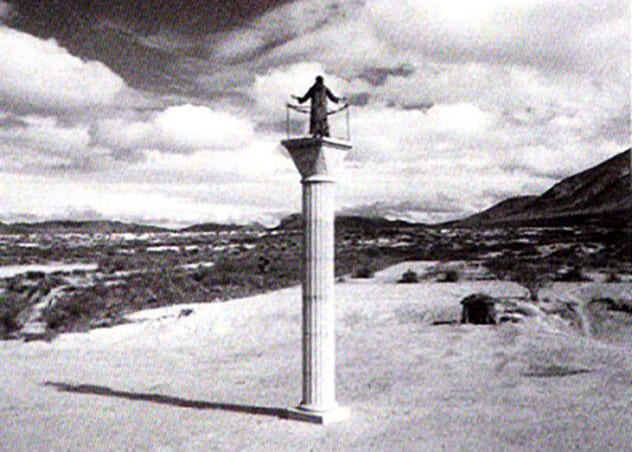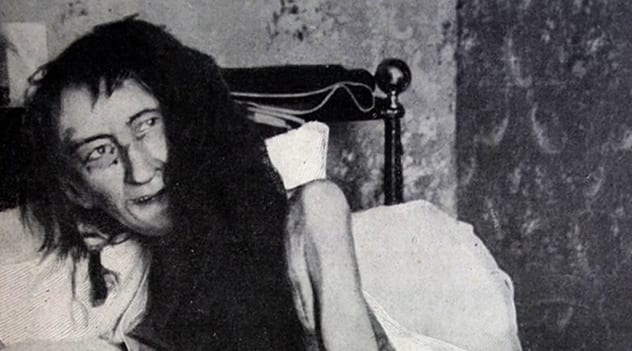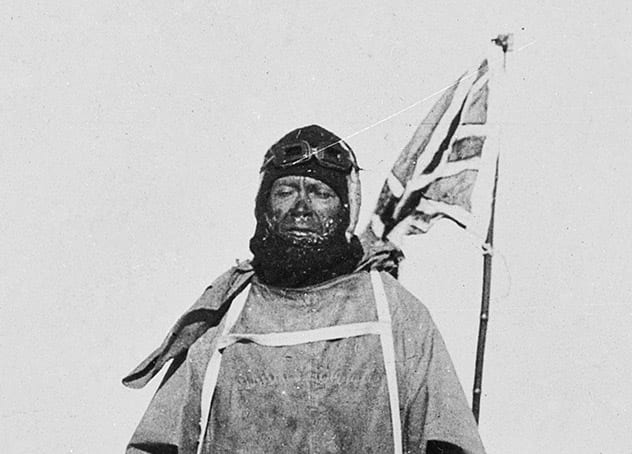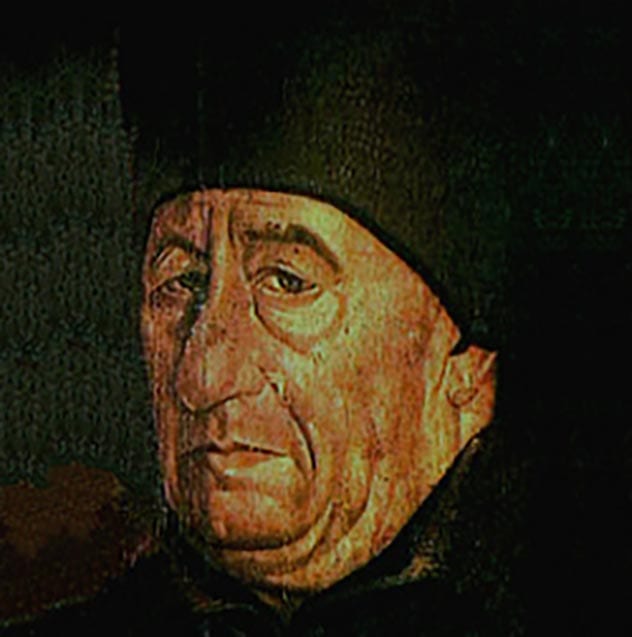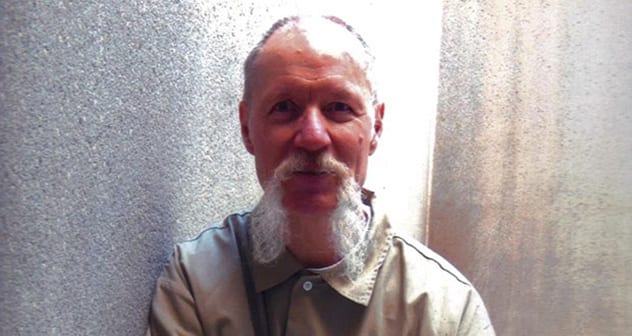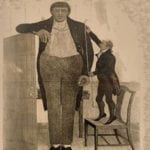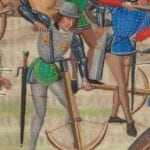10 Astonishing Mysteries From Remote Places
10 Simeon Stylites
Modern saints tend to be viewed as those who go out into the community and help others, expressing the supernatural through their heroic efforts to improve people’s lives. The criteria for sainthood in the ancient world was often quite different. Early saints renounced this world entirely. One of the ways saints did this was to avoid society as much as possible. Monasteries in the desert allowed similarly minded religious folk to live free from the temptations of the world. For some though even having others near them was too much. Simeon Stylites made his move towards the divine by literally moving away from the world – he lived for decades on a pole. There was a fashion for Christians living on poles [or stylos – meaning pillar in Greek]. Simeon was sent a vision from God at a young age urging him to build a tall pillar. At first he moved to a monastery but he was expelled for his habit of wearing a rope tightly tied around his waist. This caused the flesh to putrefy and stink, to the annoyance of the other monks. Next he became a hermit on a mountain but crowds soon came to see the holy man. To escape them he erected his pillar and moved to the top of it for the next 36 years. The sight of a man on a pillar proved too alluring for the crowds however and more people came to see him. As the years passed he increased the height of his new home to get further away from the people below. On his death he was immediately proclaimed a saint.[1]
9 Blanche Monnier
Blanche Monnier never had any intention of living a life of sequestration. Born into a well-off French family in 1849 she had all the gifts of money and beauty. Unfortunately she also had the cruellest mother imaginable. In 1874 when she was 25 years old Blanche announced to her mother that she intended to marry. Her choice of husband, a mere lawyer, did not meet with Madame Monnier’s approval. To force Blanche to change her mind Madame Monnier locked Blanche in a tiny room in the attic of the family home. Blanche’s mother and brother continued to live a normal life while Blanche lived in squalor above. Madame Monnier apparently thought that Blanche would relent of her decision to marry after some time alone to think but she never did. And so her mother never released her. Blanche spent the next 25 years locked in her attic cell. In 1901 an anonymous letter to the authorities revealed Blanche’s living conditions and the home was raided. Blanche was found living in her own filth and weighing little more than 55 pounds (25 kg). Her rescuers found “The unfortunate woman was lying completely naked on a rotten straw mattress. All around her was formed a sort of crust made from excrement, fragments of meat, vegetables, fish, and rotten bread… We also saw oyster shells, and bugs running across Mademoiselle Monnier’s bed. The air was so unbreathable, the odour given off by the room was so rank, that it was impossible for us to stay any longer to proceed with our investigation.” Blanche was saved from her isolation but remained ill and mentally unbalanced, dying in hospital in 1913.[2]
8 Julian of Norwich
Isolation is not always so extreme. Some people in history have practised a form of social isolation that doctors might wish more people were following during this pandemic. Julian of Norwich living in the 14th century was able to remain distant from people but also keep up her relationships with others. In the Middle Ages one way for people to show their devotion to God was to become an anchorite. This involved having a room built next to a church where they could literally be walled in. No one could come in or out of anchorite’s chamber. Sometimes a rite similar to a funeral service was held as the anchorite was walled in to show they were now dead to the world. The only holes into the outside world were ones that let the anchorite see the altar in the church, receive communion, and bring in food. The food hatch could also allow visitors to speak to the imprisoned person within. In 1413 Julian was visited by another religious woman, Margery Kempe. “Then she was charged by our Lord to go to an anchoress in the same city who was called Dame Julian. And so she did… and many wonderful revelations which she revealed to the anchoress in order to establish if there was any deception in them, for the anchoress was an expert in such things and could give good counsel on the matter.” Both ladies became foundational in English literary history as Margery wrote what many consider the first autobiographical text in English and Julian was the first female author of any kind in English whose work survives. One of the messages Julian received from God may be some comfort at the moment. “All shall be well, and all shall be well, and all manner of thing shall be well.”[3]
7 Robert Falcon Scott (maybe)
We live in a world that has almost been fully explored. There are few places that we can go where no one has gone before. At the beginning of the 20th century however there were still blank patches on maps and a mania developed for exploration. Robert Falcon Scott, known as Scott of the Antarctic, was a British hero for his adventures towards the South pole. His first exploration of Antarctica saw his team reach further south than anyone had ever been. The second trip saw him attain his dream of reaching the south pole – but with tragic consequences. When his team of five reached the pole they discovered that a rival team headed by Roald Amundsen had already beaten them there by five weeks. Scott’s diary recorded the team’s crushed feelings. “Great God! This is an awful place.” On the march back towards their ship one team member collapsed and died. Another, Captain Oates, felt he was slowing down the mission and so set off into the cold on his own to spare the others. He left with celebrated British understatement. “I am just going outside and may be some time.” The rest of the team carried on but blizzards slowed their progress. Within 12 miles of a supply depot they could not carry on. It’s not known who was the last survivor of their trek but whoever it was must have felt very alone. Scott’s diary ends with a message to whoever found them. “Last entry. For God’s sake look after our people.”[4]
When a patch of forest was cleared the remains of a village of fourteen huts was discovered. All had the same holes dug inside them. Researchers came to the conclusion that this man was the last of his people. No contact has been made with the man, though video footage of him has been taken. Every time tree loggers got too close he would move to a new hut further in the forest. One attempt by the loggers to talk with him ended with the Indian firing an arrow into someone’s chest. It is Brazilian policy not to force contact on tribes that do not want it. It looks as if this man will continue to live alone.[5] 10 Of The World’s Last Unexplored Places
5 Fernão Lopes
Fernao Lopes, a Portuguese soldier of the 16th century, led a very storied life. Taking part in the conquest of Goa he was left in charge of the Portuguese garrison. These men soon came under attack and many defected to the enemy. Lopes married a local woman and converted to Islam. When the next Portuguese force arrived they wreaked brutal retribution on Lopes and others. Lopes was tied up and had his nose, ears, right arm, and left thumb all hacked off. The mutilated Lopes was later offered a pardon by his king but on the way back to Portugal he jumped ship on the desolate island of Saint Helena in the middle of the Atlantic Ocean. Saint Helena was uninhabited but ships would occasionally visit to pick up fresh water and leave supplies for return journeys. Lopes set up home in a small cave, hiding from ships that passed. When one crew accidentally discovered his home Lopes got a new, unexpected friend “Then the ship set off, and as she was spreading her sails a cockerel fell overboard and the waves carried it to the shore and Lopes caught it and fed it with some rice which they had left behind for him.” The chicken lived with Lopes and followed him around. Lopes lived alone for ten years before returning to Europe. There the Pope granted him forgiveness for converting to Islam and granted him his wish – to return to Saint Helena. Lopes died there, alone, twenty years later.[6]
4 Marguerite de la Rocque
There are probably better places to be marooned than a place called “The Isle of Demons” but that is where 16th century French noblewoman Marguerite de la Rocque found herself for several years. Born a wealthy woman her land holdings were held jointly with a relative called Jean-Francois de Roberval. Roberval, it seems, did not like to share. Roberval was made governor of an area called New France, better known to us as Canada, and so he set sail for the New World and he took Marguerite with him. For some reason when they reached America Maguerite was abandoned on the Isle of Demons. Some accounts say Roberval was scandalised because she became pregnant by one of the passengers. Others say Roberval wanted sole control of their shared lands. Either way Maguerite, her lover, and a maid were left on the island. In a short period the man, maid, and then Maguerite’s baby all died. But Maguerite survived. For two years she persevered before being rescued by fishermen and returning to France. Roberval suffered no consequences for his actions but was eventually beaten to death by a mob who were angered by his Protestant religion.[7]
3 Tom Neale
Most people who ended up trapped on a desert island did so after a shipwreck or marooning by an angry crew. Tom Neale was one of the few who actively pursued isolation by moving to an uninhabited island. He spent a great deal of time in the Navy touring the Pacific ocean before leaving to explore the islands there more fully. His life changed when he heard tales of an atoll called Suwarrow. In 1952 he convinced a ship that would be passing Suwarrow to drop him there with some supplies, and his two cats. When local islanders heard about his plans for moving there they offered their help with equipment and sometimes more. Several women offered to accompany him but he politely turned down their offers. He stayed on the island for several years but a bad back forced him to leave to seek treatment. He returned but when pearl divers began to visit occasionally the island no longer felt sufficiently distant. He also claimed the “predominant reason [for leaving] was a very simple one. I realized I was getting on, and the prospect of the lonely death did not particularly appeal to me.” His attempts to live with others however did not last for long. He found many parts of modern life annoying such as clocks and trousers. In 1967 he returned to Suwarrow where he lived for ten years on his own before stomach cancer led to his death.[8]
2 Thomas Silverstein
When solitary confinement is imposed on a prisoner it can either be for their protection or the protection of guards and other inmates. It can also be a punishment used to force good behaviour. Thomas Silverstein became a legend of the American penal system when he spent the last 36 years of his life locked away alone. Some will say he deserved it, others will feel he was punished in a cruel and unusual manner. He was first put in prison for a robbery that netted him only a few hundred dollars but once behind bars he was never to be freed. Joining the Aryan Brotherhood of White Nationalists in prison he participated in the murder of other inmates. For this he received additional life sentences. After the murder of a corrections officer Silverstein was placed in solitary confinement and was to be given “no human contact.” He was held in a windowless underground cell until released in a prison riot. Once order was restored Silverstein was placed in solitary confinement again, with minimal room to exercise. A court case was brought on his behalf that what he was undergoing was unconstitutional but since other prisoners were also placed in solitary confinement Silverstein’s treatment was judged to be legal. He died in 2019, well before his theoretical release date of 2095.[9]
1 Alfred Worden
We currently share our planet with 7.5 billion other people. There is only so far you can ever truly get away from another person. To get some true isolation you have to head upwards. Most astronauts never leave near Earth orbit so are only tens of miles up in the sky, and even they have companions on their trips. Alfred Weston, who remained in the Apollo 15 command module, has been dubbed the most isolated human ever. While his fellow astronauts went for a stroll on the lunar surface he remained in orbit. As the module passed to opposite side of the moon he was 2,235 miles (3,600 km) away from them, not to mention 240,000 miles (390,000 km) from everyone else. While the moon was between him and every other human in existence Worden could not even receive radio messages. He was totally alone – not that he minded it. “I was alone but I was not lonely. My background was as a fighter pilot in the air force, then as a test pilot–and that was mostly in fighter airplanes–so I was very used to being by myself. I thoroughly enjoyed it. I didn’t have to talk to Dave and Jim any more … On the backside of the Moon, I didn’t even have to talk to Houston and that was the best part of the flight.”[10] Top 10 Places You Can’t Go About The Author: Ben Gazur is a freelance writer. Follow his Twitter account for more weird facts and folklore.
